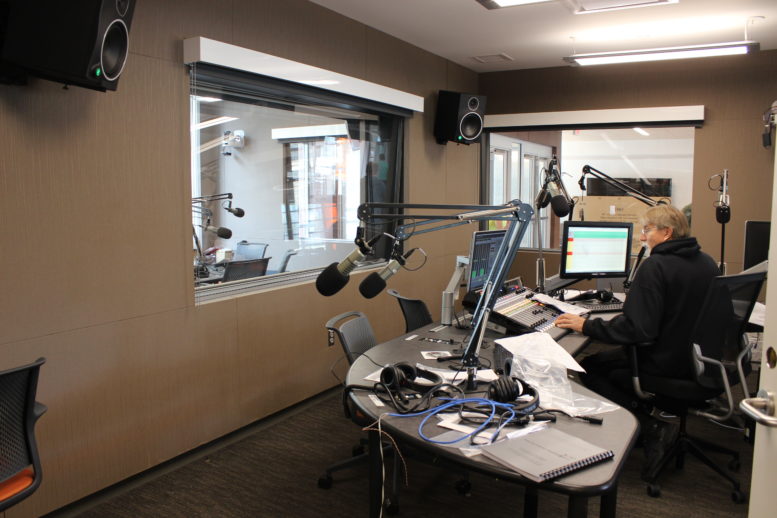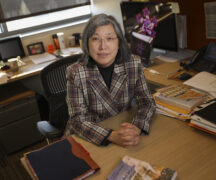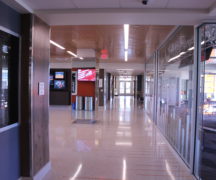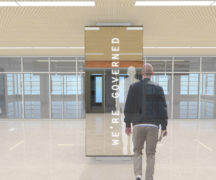By DAVID DUPONT
BG INDEPENDENT NEWS
South Hall was an eyesore; the Kuhlin Center is a gem.
Some people scoffed at the idea that South Hall with its facade pimpled with window air conditioning units should be renovated.
Now three years later the new home for Bowling Green State University’s School of Communications and Media Studies including a new wing housing a suite of studios is ready to educate a new generation of professionals.
About two weeks before the first day of classes, construction workers are still putting finishing touches on the $24 million project even as faculty and staff begin to move in.
“These projects tend to go down to the wire,” said Steve Krakoff. “This one is no different.”
Krakoff, vice president, capital planning and campus operations, was a prominent advocate for renovating rather than razing the former South Hall. It had good bones, he said.
Now he and John Fischer, vice provost for academic affairs, and Brian Swope, assistant director of office of construction and design, three administrators closest to developing the project, are walking the halls of the nearly finished Kuhlin Center. The School of Media and Communication includes three departments: Communications, Media Production and Studies, and Journalism and Public Relations.
Even for those who were familiar with the building’s previous iterations it can be hard to identify its features.
What was a dank theater space on the fourth floor is now a conference room.
The Kuhlin Center, Fischer said, will have “the nicest conference spaces on campus.”
In a fourth floor hall is a display case packed with trophies won by the forensics team. Now they will have home to match the quality of their efforts. Previously, Fischer said, they were in a basement office.
The building also has a room to which to conduct focus groups. The center is designed “to support the research agenda of the faculty,” Fischer said.
The center is designed with plenty of informal lounges. This is a continuation of an approach used in the Education Building, College of Business and Olscamp Hall.
“There’s a lot of emphasis on collaborative space,” Krakoff said.
In working on those other buildings, Fischer said, he wondered if they were overdoing it. But all those spaces in hallways and tucked under stairwells get used.
These provide opportunities “to continue the conversations” started in classrooms.
All the student media organizations will have offices in a large space just off the first floor lobby.
Fischer said there’s a great deal of interest in what the collaboration of print, digital and broadcast media will spawn.
What the Kuhlin Center does not have is a lot of are actual classrooms. Those classrooms employ the flexible design that allows for a variety of seating patterns depending on the class activity.
The video and audio production facilities are set up to accommodate a small class with extra seating in the control rooms.
The facilities include an audio recording studio. Though it had a picture window that looks out to East Wooster Street is sound proof.
Krakoff said a fire truck could roar by with lights and sirens on – not unusual especially when BGSU is in session – and the sound won’t bleed into the studio.
Those studios and editing labs are equipped with the latest equipment. Staff and faculty have been training on that the gear for weeks. Fischer said he expects new faculty and students will pick up on the changes quickly and accept the as the norm.
Bob Kline, an advisor, said it was good to have all the programs together.
“I like that the facilities are top notch for student learning,” he said. “The feedback from students has been incredibly positive. I had one student who was blown away by it. He couldn’t believe all the opportunities he would now have.”





